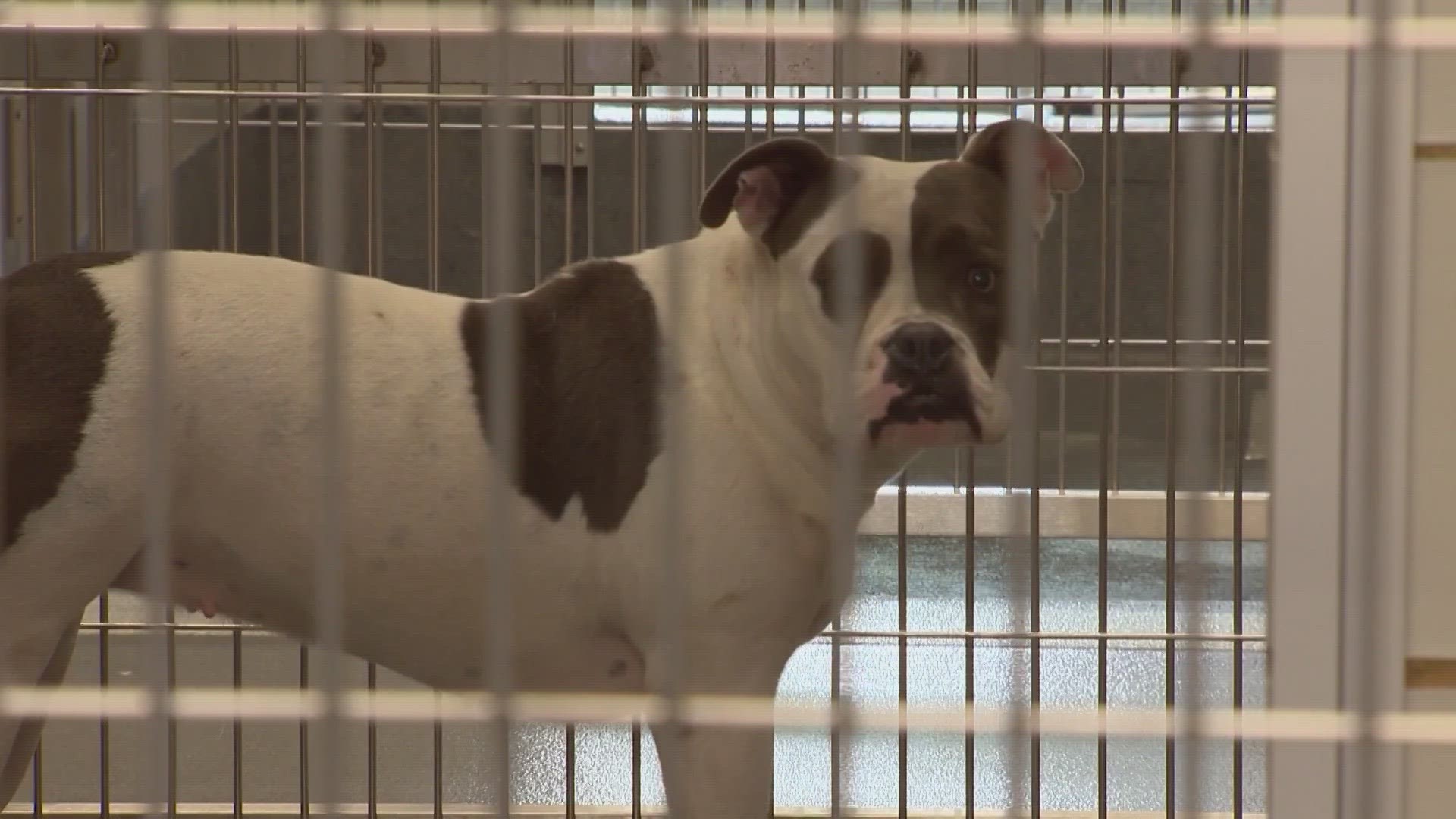SAN ANTONIO — A simple Facebook comment is helping make the San Antonio community aware of the critical issue of unwanted animals. Shelters and rescue operations are full across the board and many animals face being euthanized.
City of San Antonio Animal Care Services (ACS) posted yesterday: "Our shelter currently has 800+ pets under our care (including our foster and caretaker programs). Out of these pets, 90+ are at risk of being humanely euthanized tomorrow. If you are interested in adopting or fostering a shelter pet, please click here."
Unfortunately, the situation at ACS is only the tip of the iceberg. Local Humane Society operations and other rescues pull animals out of the shelter to help get them adopted, but those organizations are full. ACS also tries to get pets fostered or adopted themselves, but fewer and fewer people are showing up. Animals that aren't spayed or neutered tend to have litters at the beginning of the summer and that jump may have pushed the community over the edge.
ACS Chief Operations Officer Bethany Colonnese told KENS 5 the city shelter has technically been full since April of 2021. After that, it was just a questions of how they would move animals out or find other ways to make space.
"We are who you call when you have stray animals. Whether it is an aggressive free roaming animal, whether it is a bite case... just a stray dog, that's we have to do. We have to intake," Colonnese said. "We have seen our intake numbers returning to pre-pandemic levels. We are not seeing our placement levels returning to pre-pandemic levels.
Colonnese said they partner with the community for adoptions and fosters and work with animal rescues to place animals. Euthanasia is a last resort and the shelter works to maintain a 90 percent live release rate or higher.
Currently, however, ACS is taking in up to 55 dogs in a single day and there is no where for them to go. Animal rescue operations say the public is bringing them dogs at the same time.
"They feed them but can't afford the vet bills, or they find them on the street and bring them in to us. Unfortunately, I believe, every rescue in the City of San Antonio is full right now. There is nowhere to put these animals," Helotes Humane Society Executive Director Lisa Neitzel said.
Neitzel said their rescue because has needed to turn people away because they had no room for dogs. Even then people have dumped animals on their property.
Both Neitzel and Colonnese said there are several factors that could lead to more animals, and dogs in particular, showing up at shelters. The cost of dog food has increased significantly and some people can't continue to feed large dogs and there is a shortage of low-cost spay and neuter options that could lead to dogs and cats reproducing in communities.
Animal Care Services is working to create more low-cost spay and neuter opportunities, but in the meantime, adoption and foster care are the only options.
The result, of course, is more euthanasia.
Colonnese said ACS was previously able to give animals a week or two to be placed with a rescue or other home. Currently some pets have less than a week.
Colonnese said the shelter is required to make room, and they need the public to both help prevent pets from reproducing, and adopt pets, to create a solution.
"It is terrible, and we need the public's assistance to adopt animals," Colonnese said. "There is not a single person at animal care services that wants to euthanize a healthy adoptable animal."

